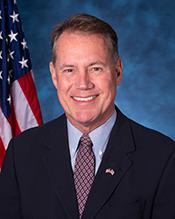0
Continued Rapid Ohia Death Response Act of 2025
3/6/2025, 9:06 AM
Summary of Bill HR 375
Rapid Ohia Death is a fungal disease that has been rapidly spreading throughout Hawaii, particularly affecting the native Ohia trees. These trees are not only important for the ecosystem but also hold cultural significance for the people of Hawaii. The bill recognizes the urgency of addressing this issue and seeks to provide resources and support for efforts to prevent further spread of the disease.
In addition to addressing Rapid Ohia Death, the bill also includes provisions for other purposes related to conservation and protection of natural resources in Hawaii. This includes funding for research, monitoring, and outreach efforts to raise awareness about the importance of preserving the Ohia trees and preventing the spread of the disease. Overall, Bill 119 HR 375 highlights the importance of collaboration between federal, state, and local agencies in addressing environmental challenges and protecting valuable natural resources. By working together, the hope is to effectively combat Rapid Ohia Death and ensure the preservation of the Ohia trees for future generations.
Congressional Summary of HR 375
Continued Rapid Ohia Death Response Act of 2025
This bill establishes requirements to research and control Rapid Ohia Death, which is the disease caused by the fungal pathogen known as Ceratocystis fimbriata that affects the tree of the species Metrosideros polymorpha.
Specifically, the Department of the Interior must partner with the Department of Agriculture (USDA) and Hawaii to control and address Rapid Ohia Death.
In addition, the U.S. Geological Survey and the Forest Service Institute of Pacific Islands Forestry must continue to research Rapid Ohia Death vectors and transmission.
The U.S. Fish and Wildlife Service must continue to partner with USDA, Hawaii, and local stakeholders to manage ungulates (e.g., certain mammals such as deer) in Rapid Ohia Death control areas on federal, state, and private land, with the consent of private landowners.
Finally, the Forest Service must provide (1) financial assistance to prevent the spread of the fungus and to restore the native forests of Hawaii, and (2) staff and necessary infrastructure funding to the Institute of Pacific Islands Forestry to research the fungus.
Read the Full Bill
Current Status of Bill HR 375
Bipartisan Support of Bill HR 375
Total Number of Sponsors
13Democrat Sponsors
13Republican Sponsors
0Unaffiliated Sponsors
0Total Number of Cosponsors
1Democrat Cosponsors
1Republican Cosponsors
0Unaffiliated Cosponsors
0Policy Area and Potential Impact of Bill HR 375
Primary Policy Focus
AnimalsAlternate Title(s) of Bill HR 375
Comments

Axel O'Neill
10 months ago
I think this is a great idea and will really help with the issue. It's important to support this and make sure it gets passed. It will benefit a lot of people in the long run.

Hadley Blanton
10 months ago
Ugh, can you believe this new bill? It's like, seriously? How is this even a thing? I can't even with it. And the long term effects? Don't even get me started. SMH.

Bryson Rosenberg
10 months ago
I think this bill is good cuz it helps with the rapid ohia death thing. I live in NM and it could affect me if the trees keep dying. I hope this bill helps fix the problem in the long run.

